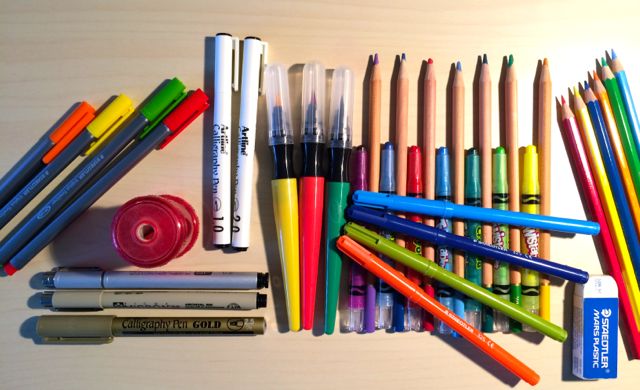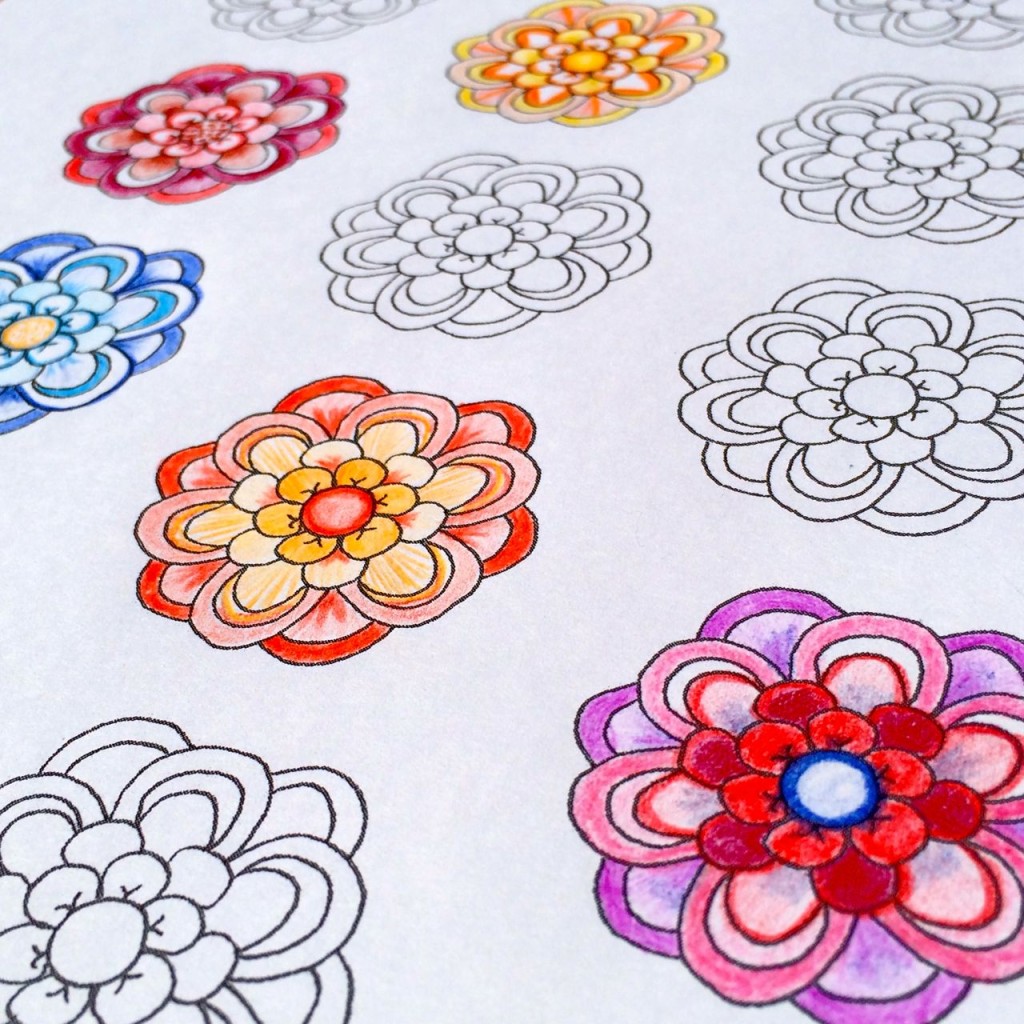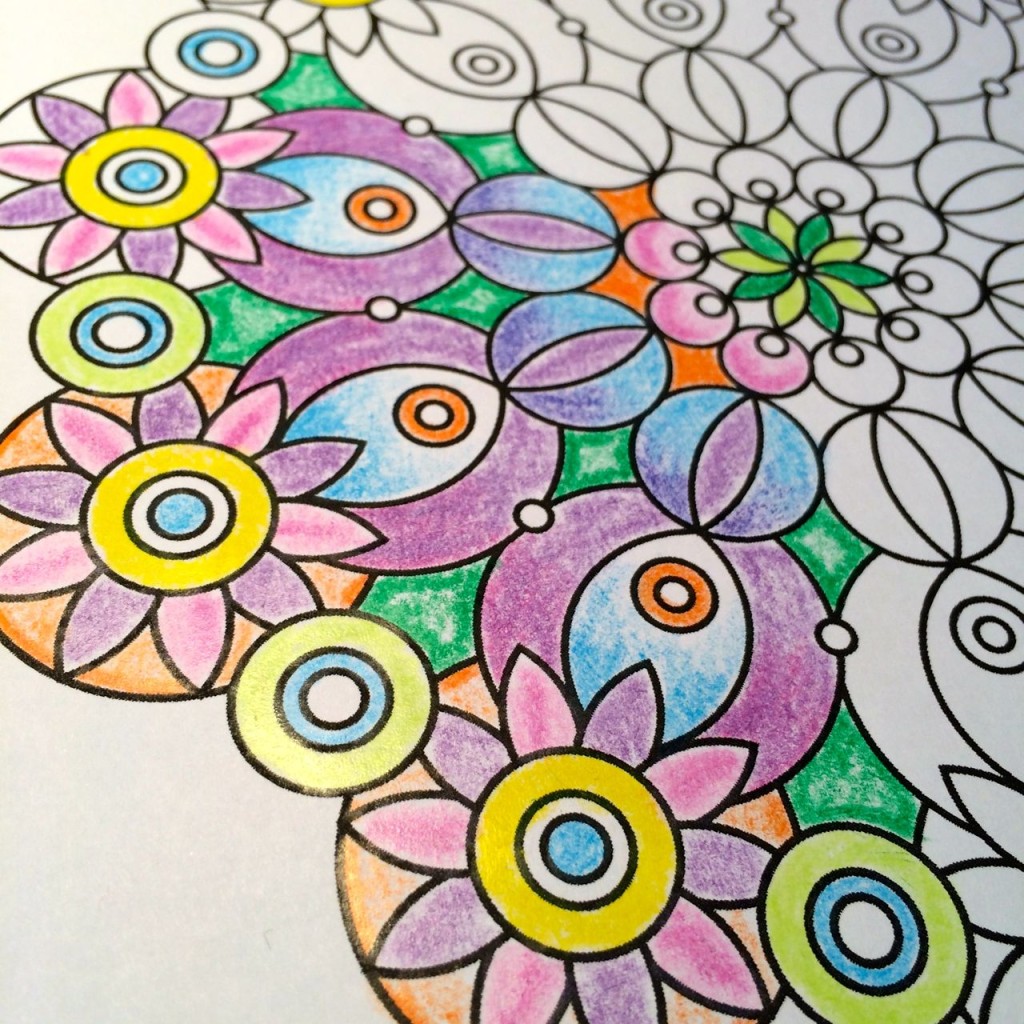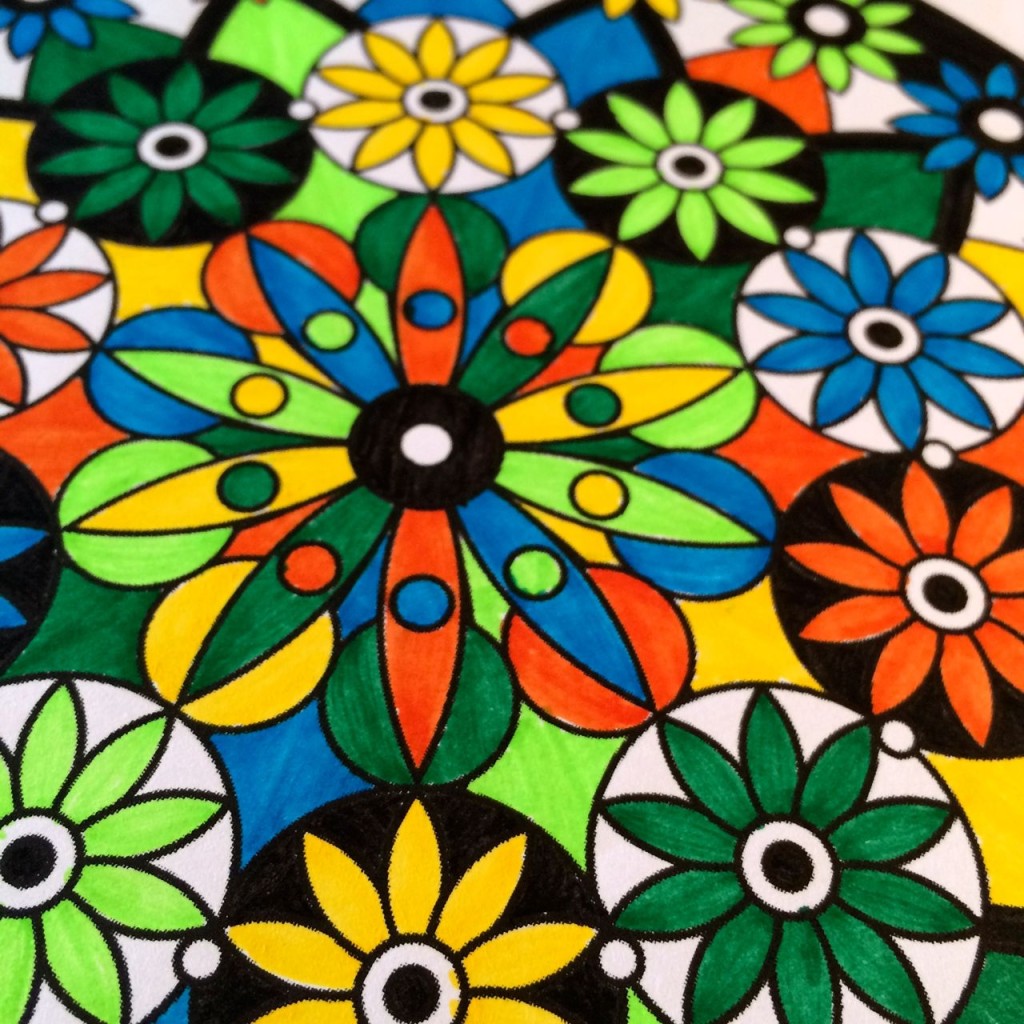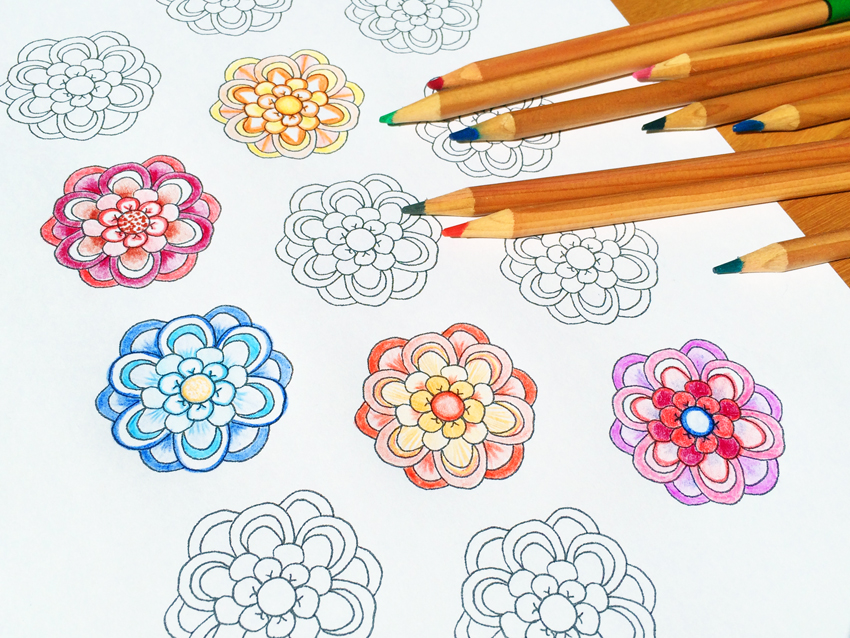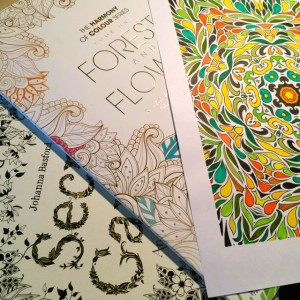Welcome back to our series on How to Color In (and here’s the link to Part 1 if you missed it).
In this post, we’ll be talking about what to color in with.
Sound simple? Not these days! There are a huge number of choices available to colorists these days, and if you’re new to coloring in (or returning after a loooong absence!), you’ll probably be looking for some advice on what drawing materials to use. So let’s get started.
What to color in with?
There are many different types of drawing media that colorists use, but the most common ones are:
- colored pencils;
- crayons;
- markers (also called pens or textas);
- pastels and oil pastels;
- inks; and
- paints (i.e. acrylic, gouache, watercolors).
By far, the most popular choices are the first three on this list – colored pencils, crayons and markers, so I’ll focus on what you need to know about each of them.
Colored pencils
Colored pencils are probably the most popular choice for adults who color in. Here’s why:
PROS
- they’re affordable;
- they come in a huge range of colors;
- they have good blending properties (unlike markers, which don’t blend well at all), so it’s possible to create beautiful fades from one color to another within a single coloring area;
- they can give soft, even coverage, and by changing the amount of pressure you apply when you color, it is possible to create light and shade effects with a single pencil;
- they can be sharpened to a fine point to make it easier to color in smaller areas;
- they last for ages and can’t dry out like markers, inks or paints;
- they can be lightly erased if you make a mistake or accidentally go outside the lines;
- you have the option of buying watercolor pencils, which you can use to color in like normal pencils, but by adding water with a brush, you can produce a watercolor paint effect;
- because pencils are not ink-based, they do not bleed through pages to the other side of the paper.
CONS
- many colored pencils use cheap pigments, which can look faded and pale even if you press hard, making it difficult to get intense color (premier brands such as Prismacolor use extremely high quality pigments and produce very intense colors, however they’re more expensive);
- it can take a while to color in larger areas, as even when you’re shading (coloring in with the side of the pencil instead of the tip), as the pencil only covers a small surface area at a time;
- unlike markers, they need to be handled carefully – if you drop them and break the pencil leads inside the pencil, they will keep breaking when you sharpen them.
Crayons
Crayons are also popular, for the following reasons:
PROS
- they give a guaranteed nostalgia hit! They’re probably what you used to color with most as a kid, so the waxy smell and texture and feel of them can really take you back;
- they are often cheaper than colored pencils;
- plenty of colors to choose from (though not as many as colored pencils);
- like pencils, they last for ages and can’t dry out like markers, inks or paints;
- they are usually chunkier than pencils so you can color in larger areas more quickly;
- chunkier crayons can be especially great for people who have trouble gripping smaller drawing implements (due to arthritis or other conditions – the fact that they’re so easy to hold is also why they’re perfect for kids, who are still developing fine motor control skills);
- different colors can be successfully blended together, or faded from one hue to another, within a coloring area.
CONS
- less control and precision – it’s much harder to color tiny areas with a crayon, as the tips of crayons are usually wider and not as precise as pencils or markers;
- because crayons have a waxy texture, they do not provide flat, even color, and can look speckled (of course this is only a ‘con’ if you don’t like the speckled effect – many colorists love it);
- the shape of a crayon’s tip is easily worn down but cannot be sharpened, which can sometimes make it hard to stay in the lines when you color in;
- cheaper brands can have more wax than pigment, meaning the colors aren’t great and they don’t feel good to use;
- they can melt in hot conditions – never leave them in a hot car.
Markers
Markers, also referred to as textas and pens, are also a very popular choice for colorists, because:
PROS
- the ink immediately gives you a really intense color effect (that you can only get with pencils and crayons by using high quality pigments and hard pressure);
- markers come in a broad range of tip sizes, from extremely fine to jumbo;
- quality fineliners in particular are amazing for coloring very intricate designs (it can be difficult to get intense color in a very small area using a pencil, and crayons are usually way too chunky for fine coloring);
- enormous range of colors to choose from;
- they are inexpensive, though they generally cost slightly more than pencils and crayons;
- you can create unusual effects using specialty markers such as metallic and fluorescent pens, that cannot be replicated with colored pencils or crayons;
- extra-creative colorists often use a black fine tipped marker to add patterns or extra details to original designs before coloring in – this allows you to individualize your work even more, and can make a simple design more interesting.
CONS
- if you have coloring book with designs on the backs and fronts of pages, markers often bleed through to the other side, staining the other image;
- markers can look ‘streaky’ (you can clearly see each stroke of the marker), especially if you color over an area more than once;
- if the paper is poor quality or too thin, going over an area with a marker may put a hole in the page;
- markers cannot color blend the way that colored pencils or crayons can, so getting smooth, graduating shades from one hue to another is not possible using markers;
- if you leave the caps off, they will dry out and become useless – so keep more expensive markers away from kids!
As you can see, there are good and bad points for colored pencils, crayons, and markers, so it’s a matter of thinking about the kinds of coloring in you prefer, and then choosing the best tool for the job. You will probably find that experimentation and play is the best way to work out your preferences.
Mixing it up
There’s no reason to choose only one way to color in! Most colorists tend to enjoy using more than one medium. The most prevalent examples of mixed-media work that I’ve seen tend to use colored pencils in conjunction with markers and specialty pens.
In Part 3, we’re going to start talking about coloring techniques, so stay tuned. And as always, if you have any questions or comments, please post them here!
By the way…can you think of any other pros or cons that we can add to our lists? Thanks :)
